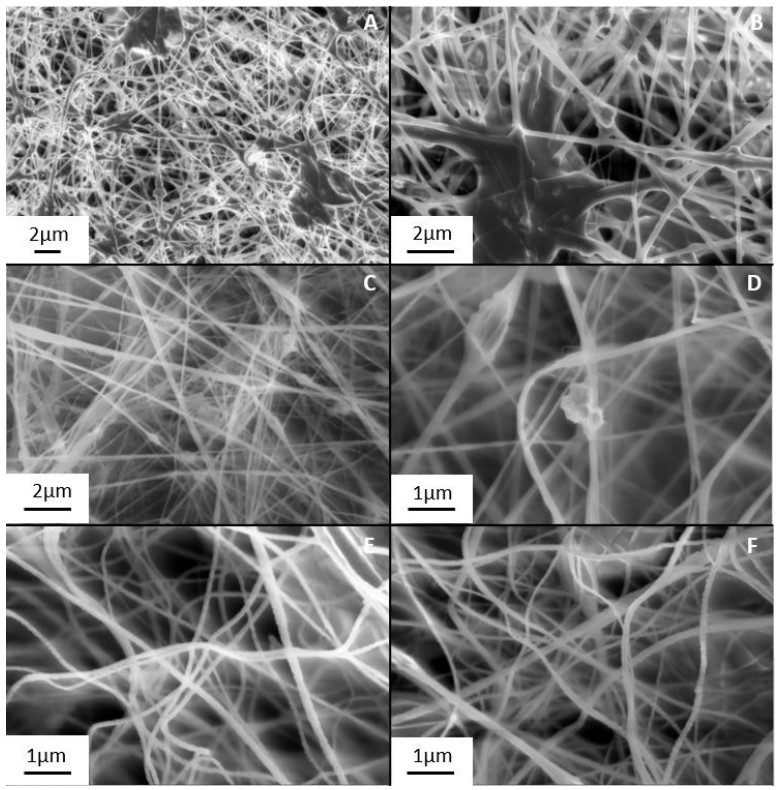© Copyright 2020 Foshan Membrane Technology Co., Ltd. All rights reserved. Sitemap
Metal-organic frameworks (MOFs) are a new and growing area of materials with high porosity and customizability. UiO-66, a zirconium-based MOF, has shown much interest to the military because of the ability of the MOF to catalytically decontaminate chemical warfare agents (CWAs). Unfortunately, the applications for MOFs are limited because of their powder form, which is difficult to incorporate into protective clothing. As a result, a new area of research has developed to functionalize fabrics with MOFs to make a wearable multifunctional fabric that retains the desired properties of the MOF. In this work, UiO-66 was incorporated into poly(vinylidene) fluoride/Ti(OH)(4) composite fabric using electrospinning and evaluated for its use in chemical protective clothing. The base triethanolamine (TEA) was added to the composite fabric to create a self-buffering system that would allow for catalytic decontamination of CWAs without the need for a buffer solution. The fabrics were tested against the simulants methyl-paraoxon (dimethyl (4-nitrophenyl) phosphate, DMNP), diisopropyl fluorophosphate (DFP), and agent soman (GD). The results show that all of the samples have high moisture vapor transport and filtration efficiency, which are desirable for protective clothing. The incorporation of TEA decreased air permeation of the fabric, but increased the catalytic activity of the composite fabric against DMNP and DFP. Samples with and without TEA have rapid half-lives (t(1/2)) as short as 35 min against GD agent. These new catalytically active self-buffering multifunctional fabrics have great potential for application in chemical protective clothings.
金属有机框架(MOF)是具有高孔隙率和可定制性的材料的一个新兴领域,并且正在不断增长。 UiO-66是一种基于锆的MOF,由于MOF能够对化学战剂(CWA)进行催化去污,因此已引起了军队的极大兴趣。不幸的是,由于MOF的粉末形式,很难应用于防护服,因此其应用受到限制。结果,开发了新的研究领域,以使具有MOF的织物功能化,从而制造出可穿戴的多功能织物,该织物保留了MOF的所需特性。在这项工作中,UiO-66通过静电纺丝法被引入到聚偏二氟乙烯/ Ti(OH)(4)复合织物中,并对其在化学防护服中的使用进行了评估。将基础三乙醇胺(TEA)添加到复合织物中,以创建一种自缓冲系统,该系统可对CWA进行催化净化,而无需缓冲溶液。测试了织物的模拟物对甲基对氧磷(二甲基(4-硝基苯基)磷酸酯,DMNP),氟代磷酸二异丙酯(DFP)和梭曼剂(GD)。结果表明,所有样品均具有较高的湿气传输和过滤效率,这对于防护服而言是理想的。 TEA的加入降低了织物的空气渗透性,但是增加了复合织物对DMNP和DFP的催化活性。具有和不具有TEA的样品对GD试剂的快速半衰期(t(1/2))短至35分钟。这些新型的催化活性自缓冲多功能织物在化学防护服中具有巨大的应用前景。

Published: 2018
Journal :ACS Applied Materials & Interfaces
Impact Factor:9.002
Paper link: https://pubs.acs.org/doi/abs/10.1021/acsami.8b11290